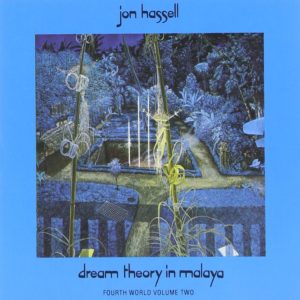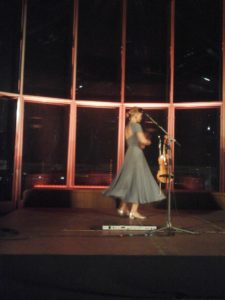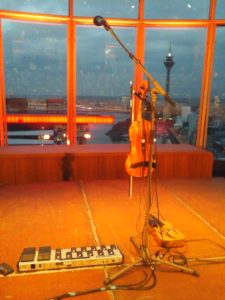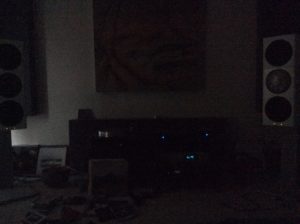In my memory, it was a hot summer afternoon in Schwabing, 1981. There was a record shop in the underground, and I remember, on my regular visits to the city, to stop by and look for exciting new albums. And I remember at least two records I bought there, Egberto Gismonti’s „Solo“ (the material on the cover had a special feel), and Jon Hassell’s „Dream Theory in Malaya“. Both stayed with me ever since.
I had my special Hassell experience, when nearly diving into „Possible Musics“, the Hassell-Eno-collab from the year before, on a never-ending bathtub session in Würzburg, all candles on! So, to hold this album in my hands (I stumbled upon it, didn’t read anything about an imminent release), to look at the surreal Mati Klarwein cover, to see the names of Eno (gongs, bells, bass) and Lanois (mix) on the backside – that all was the perfect ticket to ride.
And this was my first contact with the world of lucid dreaming, Jon Hassell’s story about anthropolgist Kilton Stewart (dating back to 1935, a golden era of Malaysian life, before brutal colonialism left its marks) made it very clear that Freud’s dream theory urgently needed some up-dates from the everyday culture of distant, ancient tribes. Two years later I became a serious student of lucid dreaming, had read the standard books of Stephen LaBerge and Prof. Tholey (the German pioneer).
In this quite short span of time, between early 1981 and early 1983, I lived in a tiny village in the Bavarian wood. This was hard stuff for a townie, and, playing smart Alec, I tried to learn my lessons from Henry David Thoreau. In fact, I learned more from a bunch of records, and „Dream Theory of Malaya“ belonged to the top of the pile. Now, the re-release of the album contains an extra-track, „Ordinary Mind“ (a quite misleading title for such an oceanic piece), offering, 36 years later, an undisputable, perfect ending of that classic.
P.S.: To work as a psychotherapist in Furth i.W. with alcoholics in the early ’80s, following a well-planned research program based on modern extensions of behaviour therapy, seems like a decent first stage of a career in psychology. On the countryside. Looking back, it was a heaven-and-hell ride, including secret road maps, love and desaster, witches and shins and hypocrites, mushrooms, dragons and, well, volleyball. Not to forget the first, very raw album of the Go-Betweens, „Send Me A Lullaby“.




